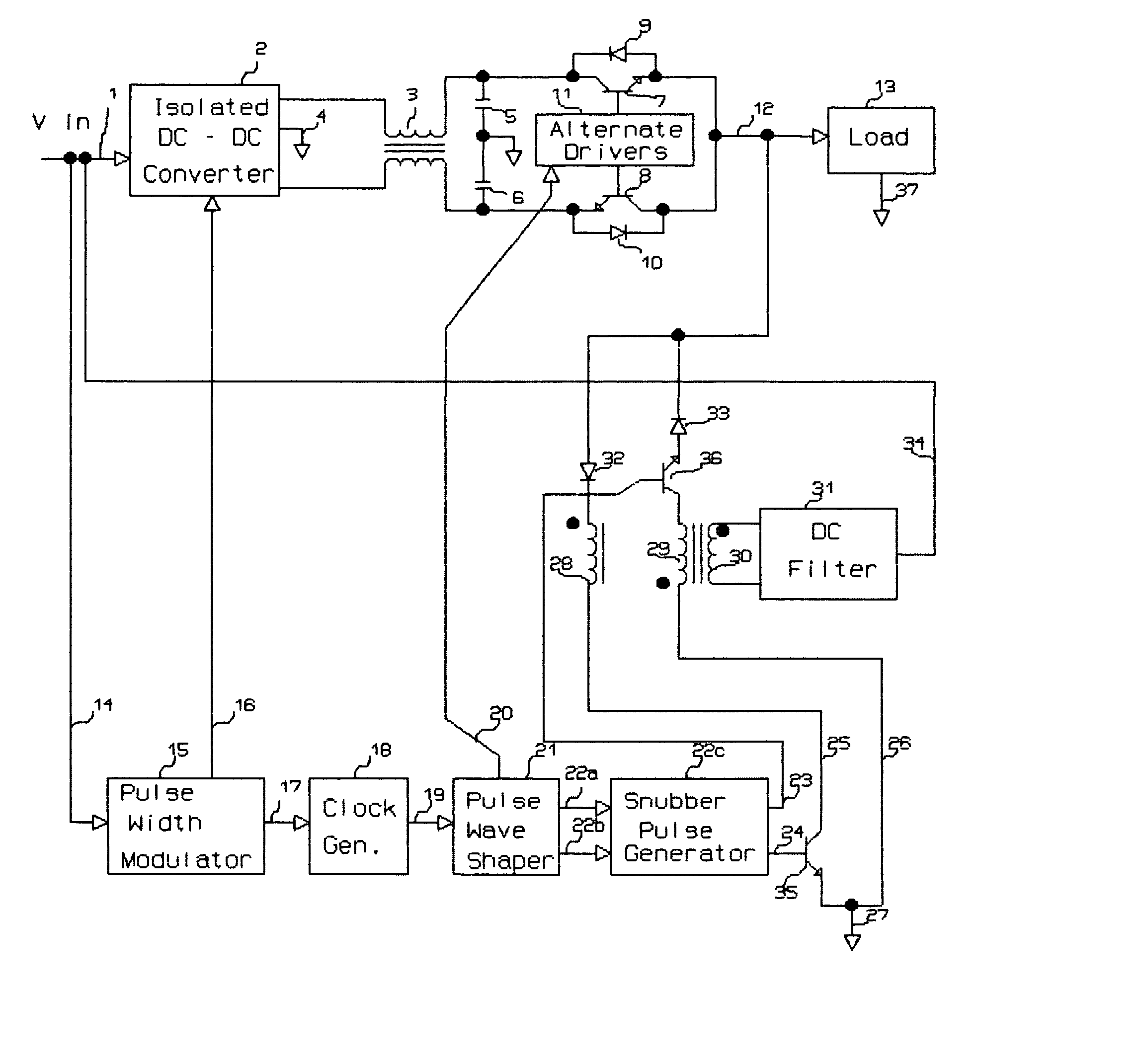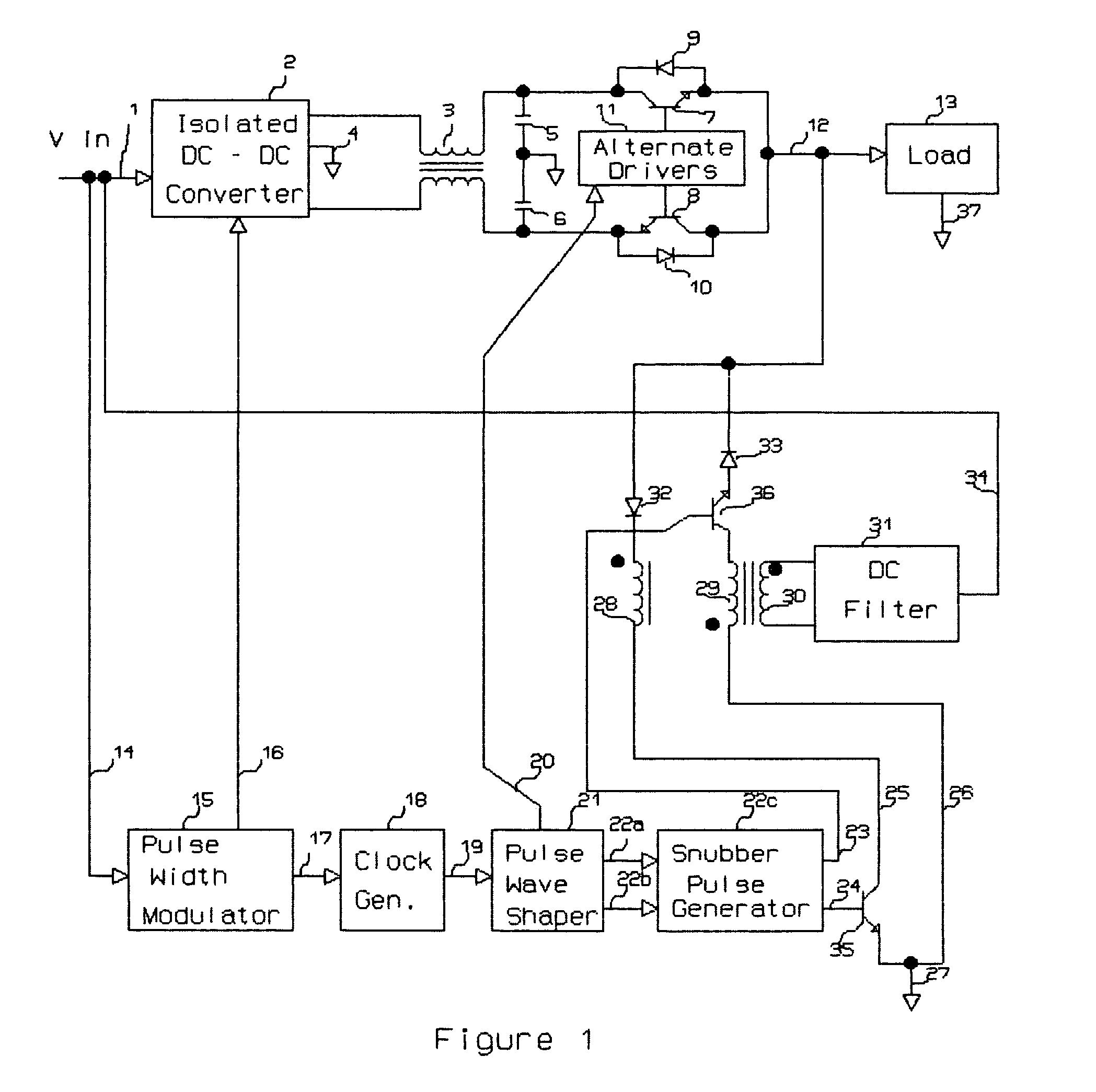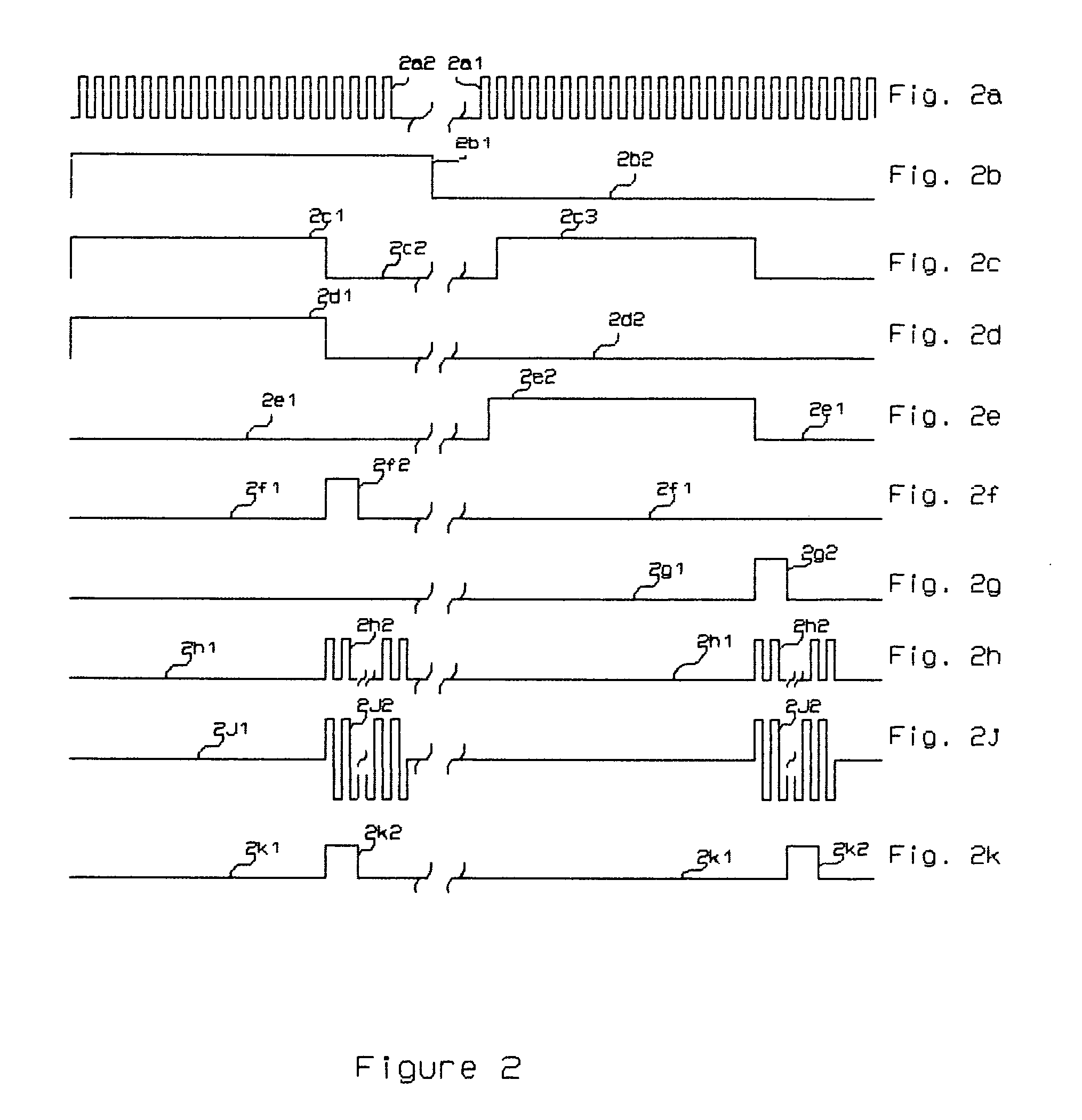Bi-directionally driven forward converter for neutral point clamping in a modified sine wave inverter
a forward converter and neutral point clamping technology, applied in the direction of electric variable regulation, process and machine control, instruments, etc., can solve the problems of high transformer loss, high quantity of primary turns, and high power dissipation in the active device, so as to achieve low internal resistance, increase inductance, and high inductance
- Summary
- Abstract
- Description
- Claims
- Application Information
AI Technical Summary
Benefits of technology
Problems solved by technology
Method used
Image
Examples
Embodiment Construction
—FIGS. 1, 2, AND 3—PREFERRED EMBODIMENTS
[0049]The functional elements of the basic modified sine wave converter are shown in the block diagram of FIG. 1. Although this invention applies to the bi-directional forward converter for neutral point clamping used within, it is felt necessary to address components used for the drive that support the converter in addition to the output for which the converter interfaces. This will ultimately yield a more thorough understanding of its operation.
[0050]A source voltage 1 is applied to the input of the isolated dc—dc converter 2 which is supported by a pulse width modulator 15 having its own internal oscillating frequency. The source voltage I is also applied to the pulse width modulator 15 via line 14 to operate its internal circuitry. The output of the isolated dc—dc converter 2 is a differential voltage of approximately 280–330 vdc with center tap 4 connected to the return of the modified sine wave output and the return of the input source v...
PUM
 Login to View More
Login to View More Abstract
Description
Claims
Application Information
 Login to View More
Login to View More - R&D
- Intellectual Property
- Life Sciences
- Materials
- Tech Scout
- Unparalleled Data Quality
- Higher Quality Content
- 60% Fewer Hallucinations
Browse by: Latest US Patents, China's latest patents, Technical Efficacy Thesaurus, Application Domain, Technology Topic, Popular Technical Reports.
© 2025 PatSnap. All rights reserved.Legal|Privacy policy|Modern Slavery Act Transparency Statement|Sitemap|About US| Contact US: help@patsnap.com



